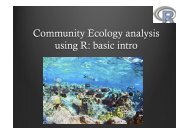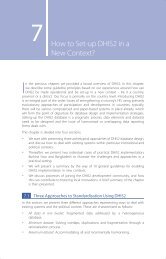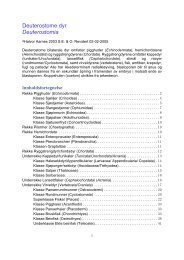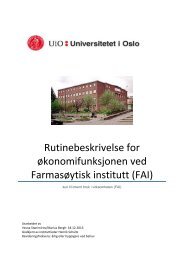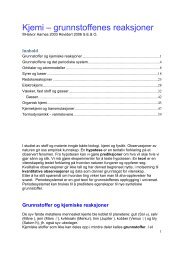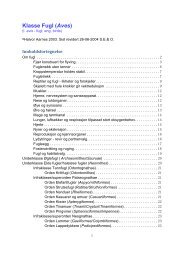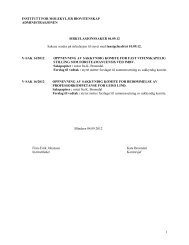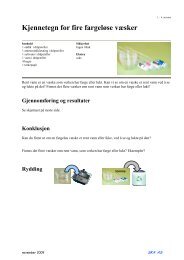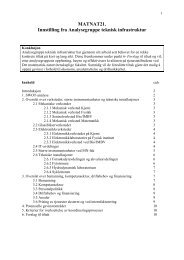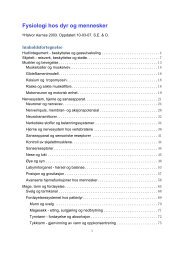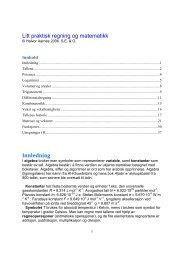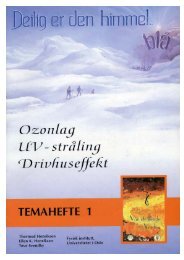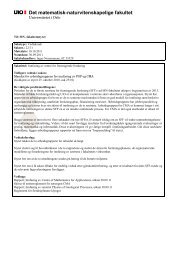MERG - Universitetet i Oslo
MERG - Universitetet i Oslo
MERG - Universitetet i Oslo
You also want an ePaper? Increase the reach of your titles
YUMPU automatically turns print PDFs into web optimized ePapers that Google loves.
<strong>MERG</strong><br />
Microbial ecology of mycorrhizal symbiosis<br />
Objectives of the project<br />
• A main focus will be to analyze which factors that determine and influence on the structure and<br />
composition of the ectomycorrhizal (ECM) fungal community in the Bistorta vivipara root system.<br />
• Using experimental and empirical approaches, we want to analyze the effects of factors like host<br />
genotype (ecotype) and variation in environmental conditions on the ECM community and how the<br />
ECM community changes during a primary successional process.<br />
• Furthermore, we want to analyze the effects of various biotic interactions (like the occurrence of<br />
various bacteria) on the ECM community of B. vivipara.<br />
• Another main task will be to evaluate the temporal and spatial variation in the ECM fungal community<br />
associated with B. vivipara.<br />
A<br />
Project summary<br />
The community ecology of root associated fungi will be studied using the perennial plant Bistorta<br />
vivipara as a ‘model system’. As one of few herbaceous plants, B. vivipara forms ectomycorrhizal (ECM)<br />
relationships with various fungi. The small and condensed root systems makes B. vivipara an ideal<br />
model organism for ECM community studies since the entire fungal assemblage associated with the<br />
roots easily can be analyzed simultaneously using high throughput sequencing technologies. Using B.<br />
vivipara as a model system we will be able to overcome many of the challenges we face when working<br />
with the large root systems of slow-growing cultivated trees. One main focus will be to analyze which<br />
factors that determine and influence on the structure and composition of root-associated fungi of B.<br />
vivipara. We also want to analyze the bacteria associated with the mycorrhizal symbiosis and study the<br />
interplay between the plant host, the fungal symbionts and the associated bacteria. Both observational<br />
field studies and experiments will be conducted. The experiments will involve the establishment of an in<br />
vitro model system, where effects of bacterial and fungal species in the symbiotic relationship will be<br />
tested.<br />
The team<br />
Tor Carlsen (Post Doc), Rakel Blaalid (PhD), Unni Vik (PhD), Fang Yao (MSc-student), Synnøve Botnen<br />
(MSc-student), Rune Heimdal (MSc-student), Håvard Kauserud, Tom Andersen, Klaus Høiland, Trond<br />
Schumacher, Anne-Brit Kolstø (LaMDa), Ole Andreas Løchen Økstad (LaMDa), Anne Brysting (CEES),<br />
Karl I. Ugland (Marine) + external collaborators.<br />
17<br />
B<br />
A. Bistorta vivipara B. The small and<br />
condensed root systems makes B.<br />
vivipara an ideal model organism<br />
for ECM community studies<br />
Photo: Unni Vik<br />
Photo: Marie Davey




